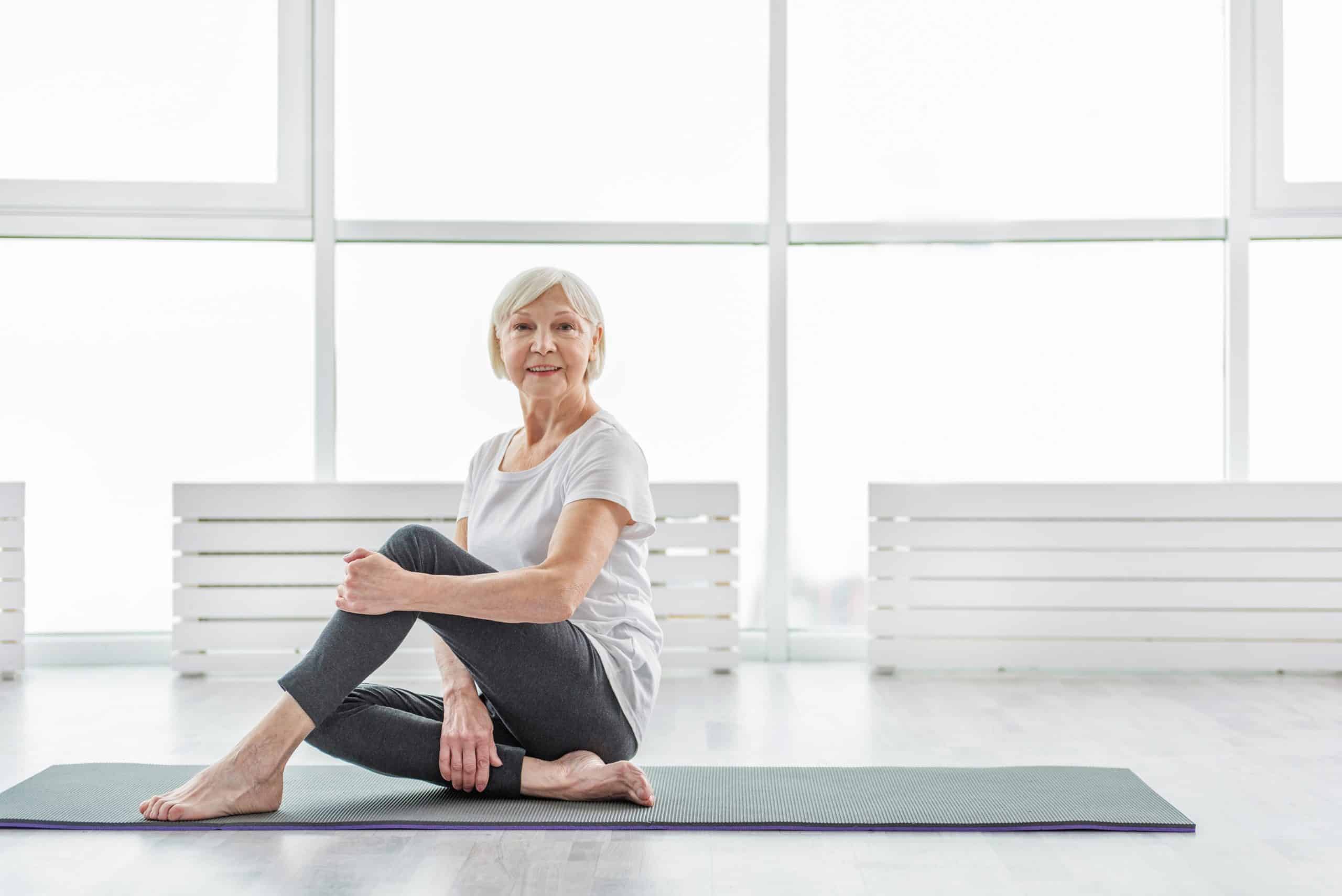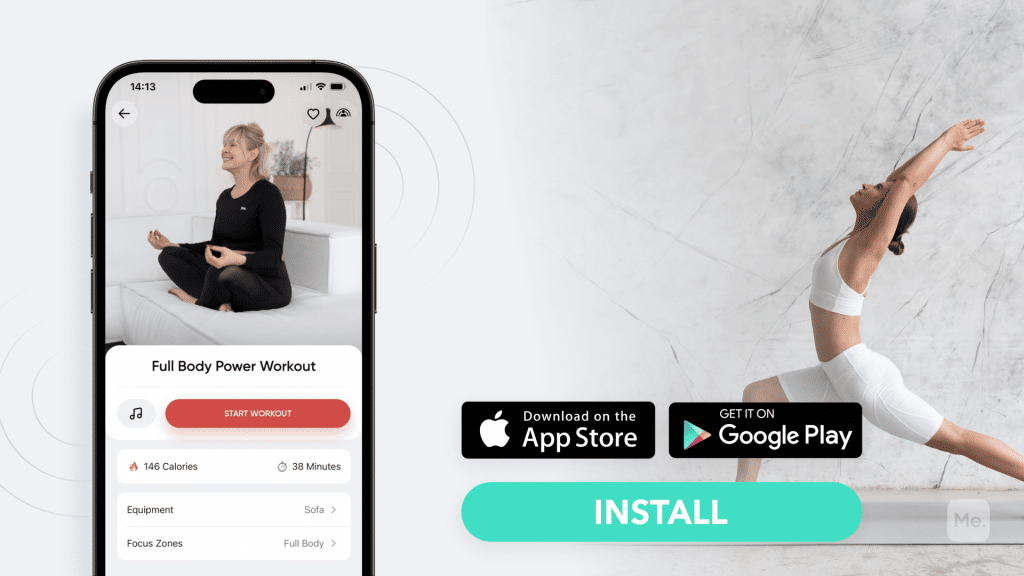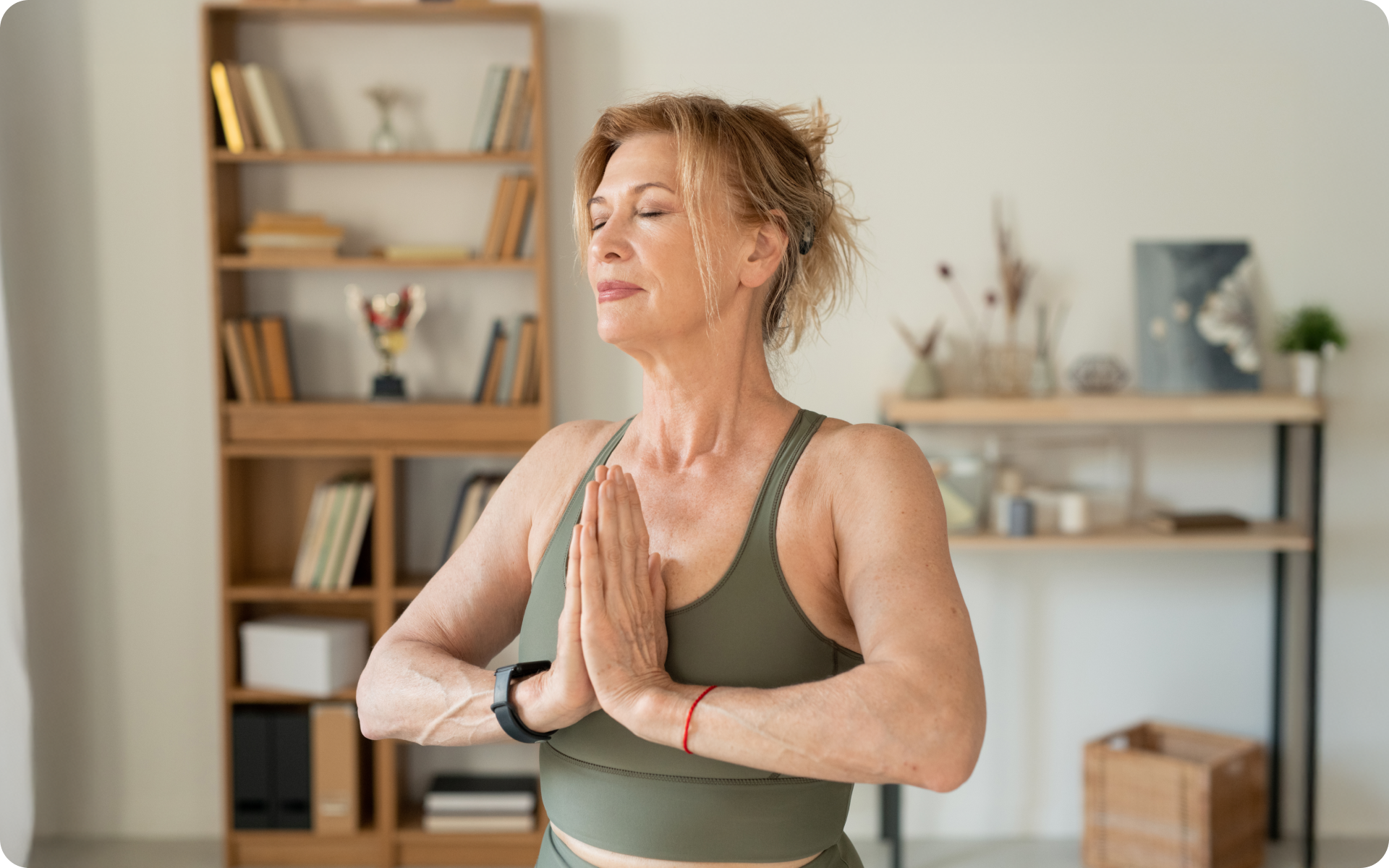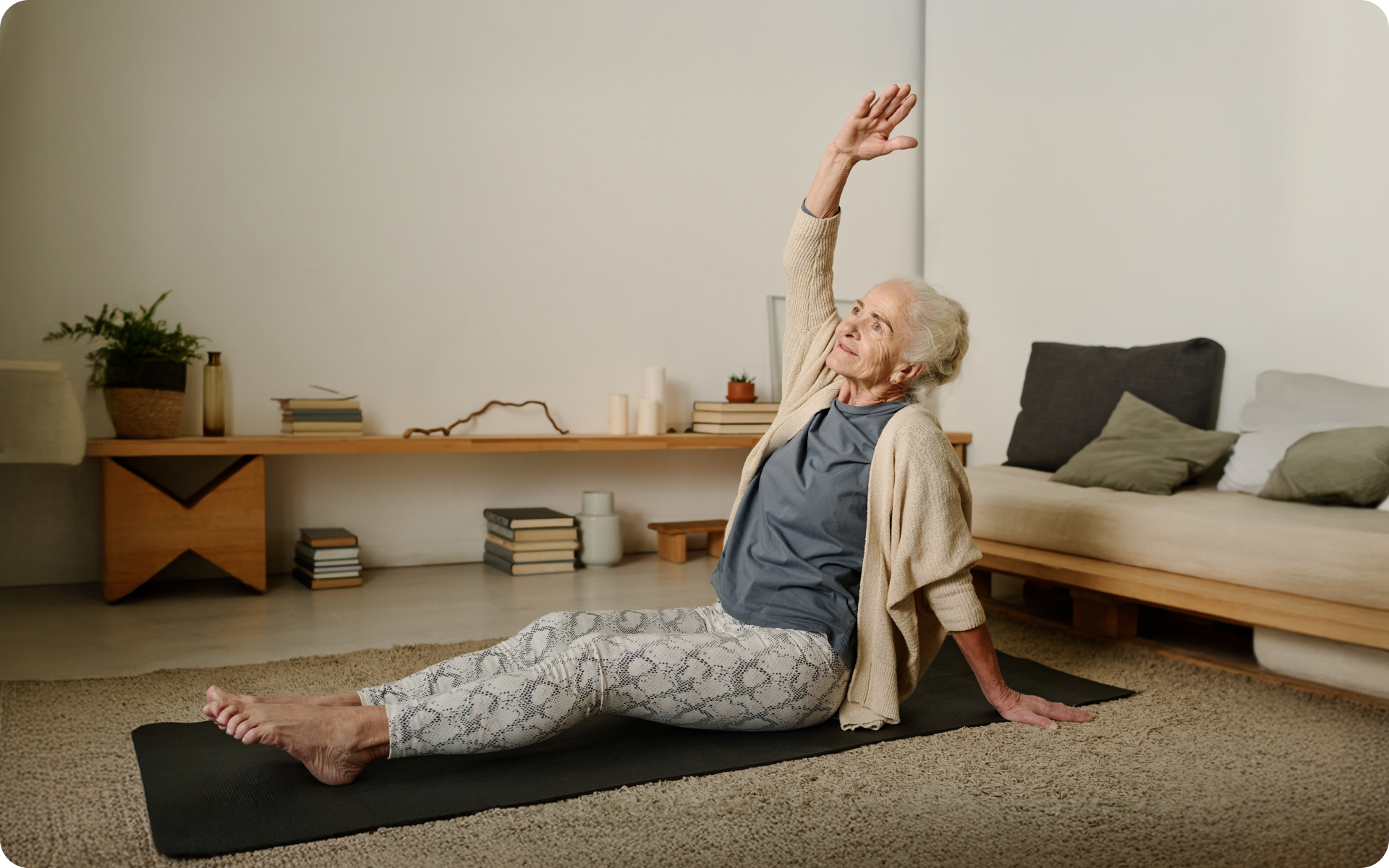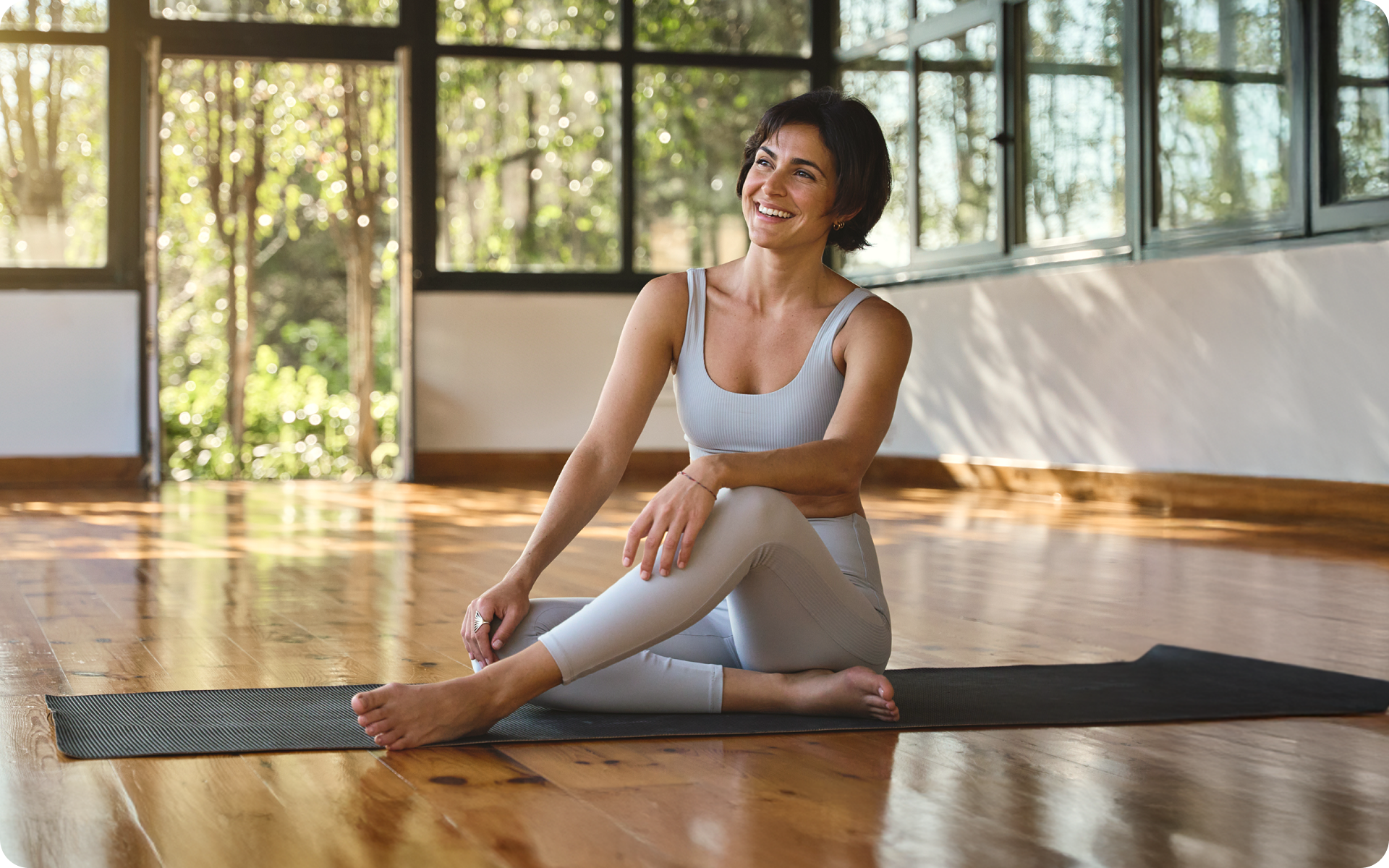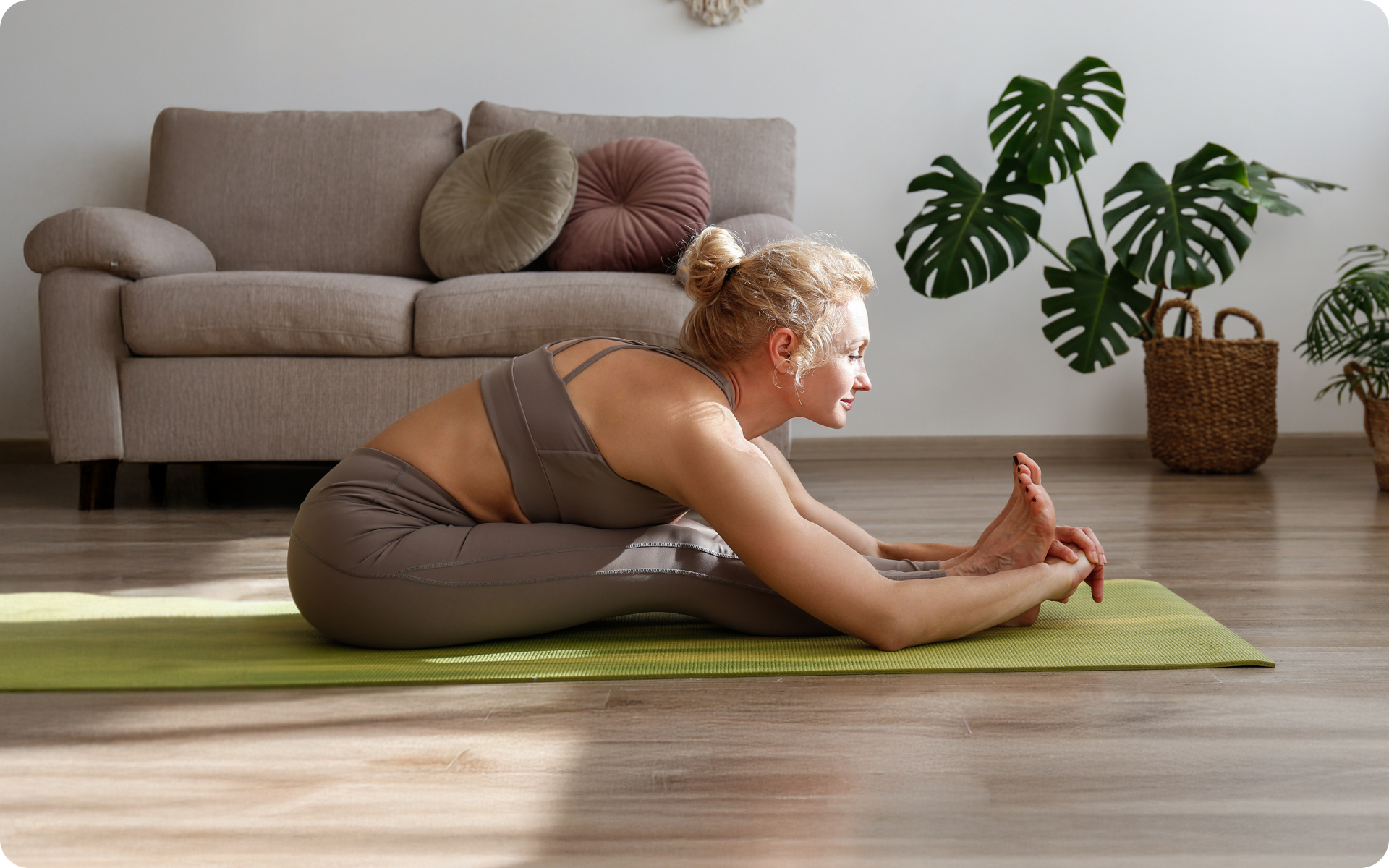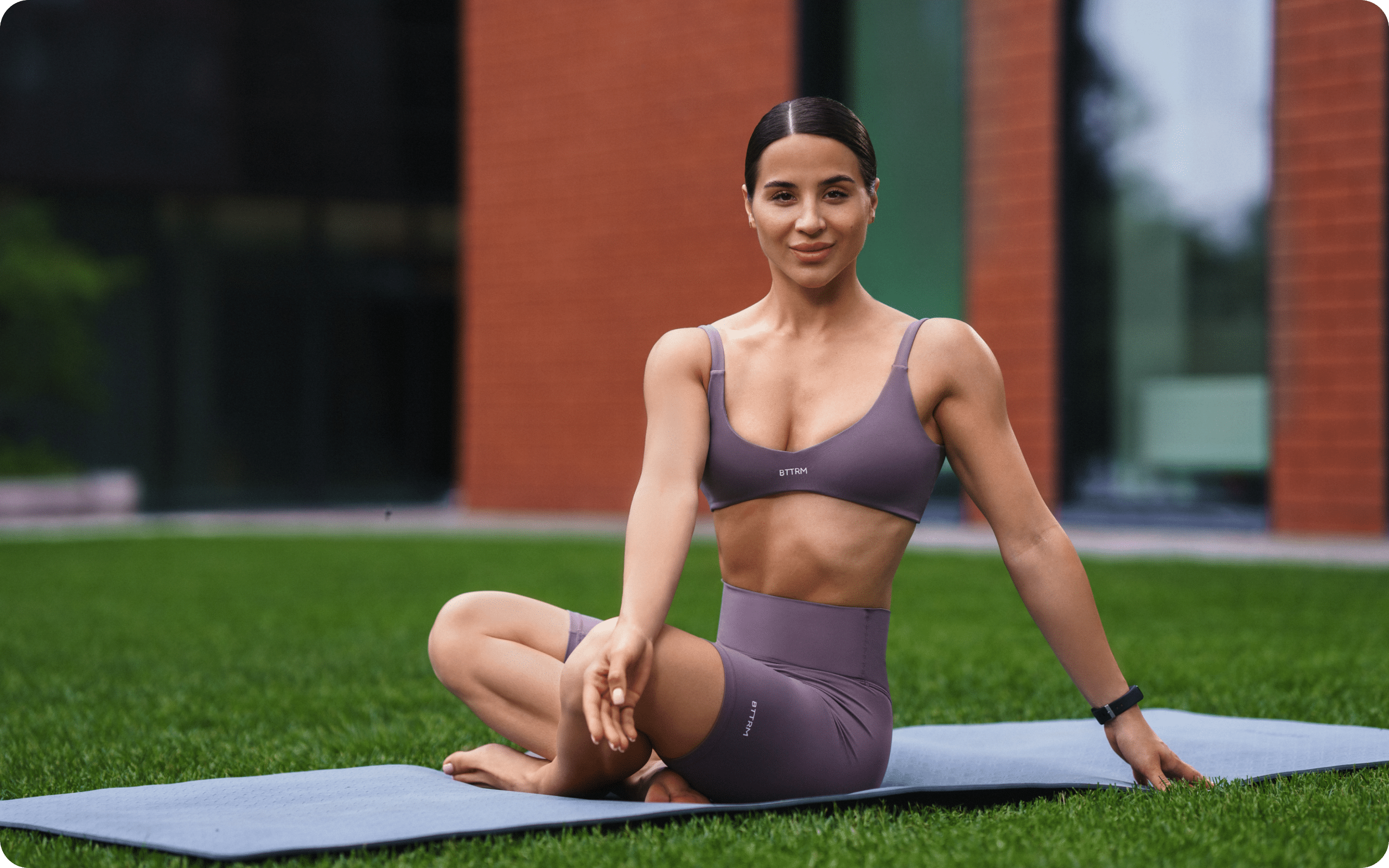Is there any practice as age-defying as yoga? Whether you’re young or old, yoga has been shown to improve mental and physical well-being. For seniors, in particular, the benefits of yoga are many. From improving balance and flexibility to reducing stress and anxiety, there are plenty of reasons to give yoga a try later in life. Of course, as with any physical activity, it’s important to check with your doctor before starting a yoga practice. And be sure to start slowly, with beginner-friendly poses and modifications. Once you get the green light, you can explore all the different ways yoga can improve your life. Here’s everything you need to know about yoga for seniors, including some beginner-friendly poses to get you started.
Which Is The Best Type Of Yoga For Seniors?
There are many types of yoga, and some are more strenuous than others. If you’re a senior, it’s important to choose a practice that’s suitable for your fitness level. Some options worth considering are:
Yin Yoga
Yin yoga is a slow-paced type of yoga, characterized by long holds in seated or reclined positions. Because it’s not as physically demanding as other types of yoga, it’s a good choice for seniors.
Sofa and chair yoga are closely related to yin yoga—both are gentle and focused on lengthening connective tissues, rather than building muscle strength. You can do these practices at home, using a sofa or chair as props.
Restorative Yoga
Like yin yoga, it is a relaxing, low-impact practice. Poses are often supported by props, such as blankets and bolsters, to help you sink deeply into relaxation. If you have chronic pain or other health conditions, restorative yoga may be a good option for you.
Iyengar Yoga
This type of yoga is named for its creator, B.K.S. Iyengar. It’s characterized by the use of props, such as blocks, straps, and blankets, to help you achieve proper alignment in each pose.
Iyengar yoga can be gentle or more challenging, depending on the class you choose. If you have limited mobility, this may be a good option for you.
Anasura Yoga
This modern-day version of yoga is based on Hatha yoga, which means it combines physical postures with breath work.
Anusara yoga classes typically include a lot of heart-opening poses, such as backbends. They’re also known for being uplifting and inclusive—a welcoming environment for seniors who are new to yoga.
Read More: Yoga For Knee Strength: Strengthen Your Joint With These Poses
Which Types Of Yoga Should Seniors Avoid?
However, there are some types of yoga that may not be suitable for seniors, depending on your fitness level and health conditions. These include:
Bikram Or “Hot” Yoga
This type of yoga is practiced in a room heated to approximately 105 degrees Fahrenheit. Because of the heat, it’s not recommended for seniors—or anyone with heart problems or other health conditions.
Vinyasa Yoga
Vinyasa yoga is a more physically demanding type of yoga, characterized by flowing sequences of poses. If you’re not used to physical activity, or if you have certain health conditions, this type of yoga may not be suitable for you.
Ashtanga Yoga
Ashtanga yoga is another physically demanding type of yoga, characterized by a set series of poses that are linked together by sun salutations. If you’re new to yoga, or if you have certain health conditions, this type of yoga may not be suitable for you.
Which Yoga Poses Are Best For Seniors?
The following yoga poses are suitable for seniors. They involve minimal movement and can be done with the support of props, such as chairs, blankets, and blocks.
Seated Forward Bend
This pose lengthens the spine and stretches the hamstrings. It’s also a good way to calm the mind and relieve stress.
To do this pose:
- Sit in a chair with your feet flat on the ground, hip-width apart.
- Inhale, lengthening your spine.
- Exhale, hinge forward from the hips, keeping your back straight.
- Rest your hands on your thighs, or place a blanket over your legs and grab the edges.
- Hold the pose for 1–5 minutes.
Cat-Cow Pose
This pose massages the spine and helps to relieve back pain. It’s also a good way to warm up the body before doing other yoga poses.
To do this pose:
- Start on all fours, with your wrists under your shoulders and your knees under your hips.
- Inhale, arching your back and looking up toward the ceiling.
- Exhale, rounding your back and looking down toward your belly.
- Continue moving through the pose, following your breath.
- For seniors with limited mobility, this pose can be modified into a seated version. To do the seated version of this pose:
- Sit in a chair with your feet flat on the ground, hip-width apart.
- Inhale, arching your back and looking up toward the ceiling.
- Exhale, rounding your back and looking down toward your belly.
- Continue moving through the pose, following your breath.
Lean and toned up body isn’t just a far-fetched fantasy. Check out the BetterMe app and watch it propel your weight loss journey into high gear!
Supported Tree Pose
The tree pose is excellent for building leg and abdominal strength. It also improves balance and coordination.
To do this pose:
- Stand up straight with your feet hip-width apart. Place a chair next to you for support.
- Shift your weight onto your left leg and place your right foot on your left ankle, calf, or thigh—whatever feels comfortable.
- If you need more support, place your right hand on the back of the chair.
- Engage your core muscles and lift your left foot off the ground.
- Hold the pose for 1–5 minutes, then switch sides.
Supported Bridge Pose
The bridge pose is an excellent way to improve posture and relieve back pain. It’s also a good way to strengthen the legs, hips, and core muscles.
To do this pose:
- Lie on your back with your feet flat on the ground and your knees bent. You can also assume this position on a sofa.
- Place a blanket under your back for support.
- Press your feet into the ground and lift your hips up toward the ceiling, keeping your knees in line with your ankles.
- Interlace your fingers and place them under your back for support.
- Hold the pose for 1–5 minutes, then release and repeat 2–3 times.
Corpse Pose
This pose is excellent for relaxation and stress relief. It’s also a good way to lengthen the spine and release tension in the body.
To do this pose:
- Lie on your back with your feet flat on the ground and your arms at your sides.
- Close your eyes and focus on your breath.
- Allow your whole body to relax, sinking into the ground.
- Stay in the pose for 5–10 minutes.
Bird Dog
The health of the spine is very important for seniors. This pose helps to strengthen the muscles around the spine and improve balance and coordination.
To do this pose:
- Start on all fours, with your wrists under your shoulders and your knees under your hips.
- Inhale, lengthening your spine.
- Exhale, lifting your right arm and left leg off the ground. Keep your hips level and your core engaged.
- Hold the pose for 1–2 breaths, then lower your arm and leg and repeat on the other side.
Read More: How To Do Sofa Yoga As A Beginner: Everything You Need To Know
Downward Facing Dog
This pose is an excellent way to strengthen the arms and legs. It also helps to improve balance and coordination.
To do this pose:
- Start on all fours, with your wrists under your shoulders and your knees under your hips.
- Inhale, lengthening your spine.
- Exhale, lifting your hips up and back, coming into an upside-down “V” shape. Keep your knees bent if you need to.
- Hold the pose for 1–2 breaths, then release and repeat 2–3 times.
What Are The Benefits Of Yoga For Seniors?
Yoga can help improve many different aspects of your health as you age. Here are some of the most significant benefits of practicing yoga later in life:
Improved Balance And Coordination
Aging has a natural tendency to lead to a decline in balance and coordination. Muscle weakness, changes in vision, and slower reflexes can all contribute to an increased risk of falls (10).
Yoga improves balance and coordination for seniors in several ways. For one, it helps to increase strength and flexibility, both of which are important for maintaining balance (2).
In addition, yoga makes you more aware of your body and how it moves through space, helping you to move with greater intention and awareness.
Increased Bone Density
Osteoporosis is a serious problem for seniors, especially women. According to the National Institutes of Health, more than 10 million Americans have osteoporosis, and another 34 million have low bone density, putting them at risk for the condition (3).
Yoga can help increase bone density in seniors. Weight-bearing yoga poses, such as Downward-Facing Dog, help to stimulate bone growth and prevent the loss of bone mass (12).
Reduced Inflammation
Inflammation is a natural response of the body to injury or disease. However, chronic inflammation is associated with a number of serious health conditions, including heart disease, arthritis, and cancer (13).
Yoga has been shown to reduce inflammation in the body. This may be due, in part, to the fact that yoga helps to reduce stress levels, and chronic stress is a major contributor to inflammation (1).
In addition, the deep breathing practiced in yoga helps to increase the levels of anti-inflammatory compounds in the body.
Improved Digestion
Digestive problems are common in seniors. Constipation, diarrhea, and abdominal pain are all frequent complaints. The reason for this increase in digestive problems is not fully understood, but it may be due to changes in diet, reduced physical activity, and the use of medications (5).
Yoga can help to improve digestion in seniors. The gentle stretching and twisting motions help to massage the organs and stimulate blood flow to the gut. In addition, the deep breathing practiced in yoga helps to relax the digestive muscles and promote regularity (8).
Looking for a way to break the vicious cycle of weight loss and tone up all the jiggly parts? Watch the extra pounds fly off and your muscles firm up with the BetterMe app!
Improved Sleep Quality
Sleep problems are common in seniors. Approximately 30% of adults over the age of 65 have difficulty falling asleep, and another 30% wake up frequently during the night (9).
Yoga can help to improve sleep quality in seniors. The relaxation techniques practiced in yoga help to quiet the mind and ease the body into a state of rest. In addition, the deep breathing practiced in yoga helps to improve the quality of sleep and reduce the number of times you wake up during the night (1).
Improved Cognitive Function
Cognitive decline is a natural part of aging. However, seniors who practice yoga have been shown to experience a slower rate of decline than those who do not (6).
Yoga may help to improve cognitive function in seniors by increasing blood flow to the brain. In addition, the deep breathing practiced in yoga helps to oxygenate the blood and improve brain function (6).
Improved Mental Health
Depression and anxiety are common mental health problems in seniors. These conditions can lead to a number of serious problems, including social isolation, reduced quality of life, and an increased risk of suicide (4).
Yoga has been shown to improve mental health in seniors. The relaxation techniques practiced in yoga help to reduce stress and anxiety, while deep breathing helps to increase levels of serotonin, the “happy hormone” (14)
In addition, the social aspect of yoga can help to reduce feelings of isolation and loneliness.
Increased Longevity
Yoga has been shown to increase lifespan. A study of 22,598 adults found that those who practiced yoga had a 63% reduced risk of premature all-cause mortality than those who did not (15).
The health benefits of yoga are due, in part, to the fact that it helps to reduce stress levels. Chronic stress is a major risk factor for a number of serious health conditions, including heart disease, stroke, and cancer (11).
In addition, the deep breathing practiced in yoga helps to increase the levels of antioxidants in the body, which protect cells from damage and help reduce the risk of disease (7).
Safety Precautions
Yoga is generally safe for healthy adults. However, there are some safety precautions that should be taken when practicing yoga, especially if you are a senior.
Talk To Your Doctor First
If you have any health problems or are taking any medications, it is important to talk to your doctor before starting a yoga practice. Some conditions, such as high blood pressure, heart disease, and osteoporosis, may be made worse by certain yoga poses.
In addition, some medications can interact with yoga in a negative way.
Choose The Right Class
There are many different types of yoga classes available. It is important to choose a class that is appropriate for your fitness level and health condition.
If you have any health problems, it is best to choose a class that is specifically designed for seniors or beginners. These classes will be slower paced and will focus on gentle stretching and relaxation.
Use Props
If you have any trouble getting into or holding a yoga pose, don’t be afraid to use props. Props, such as yoga blocks or straps, can help you to maintain correct form and alignment while you are practicing yoga.
Listen To Your Body
Yoga should never hurt. If you feel pain or discomfort at any time during your practice, stop doing the pose and rest.
Practice Regularly
The benefits of yoga are cumulative. In other words, the more you practice, the greater the benefits will be. Try to practice yoga at least 3 times per week for best results.
The Bottom Line
Yoga is a safe and effective form of exercise for seniors. It offers a number of health benefits, including improved flexibility, balance, and muscle strength. In addition, yoga can help improve mental health and increase lifespan.
If you are a senior, it is important to choose a class that is appropriate for your fitness level and health condition. If you have any existing health problems, talk to your doctor before starting a yoga practice.
Get your personalized
meal plan!
DISCLAIMER:
This article is intended for general informational purposes only and does not serve to address individual circumstances. It is not a substitute for professional advice or help and should not be relied on for making any kind of decision-making. Any action taken as a direct or indirect result of the information in this article is entirely at your own risk and is your sole responsibility.
BetterMe, its content staff, and its medical advisors accept no responsibility for inaccuracies, errors, misstatements, inconsistencies, or omissions and specifically disclaim any liability, loss or risk, personal, professional or otherwise, which may be incurred as a consequence, directly or indirectly, of the use and/or application of any content.
You should always seek the advice of your physician or other qualified health provider with any questions you may have regarding a medical condition or your specific situation. Never disregard professional medical advice or delay seeking it because of BetterMe content. If you suspect or think you may have a medical emergency, call your doctor.
SOURCES:
- 9 Benefits of Yoga (n.d., hopkinsmedicine.org)
- A Systematic Review of Yoga for Balance in a Healthy Population (2014, nih.gov)
- An overview and management of osteoporosis (2017, nih.gov)
- Anxiety, Depression and Quality of Life in Older Adults: Trajectories of Influence across Age (2020, nih.gov)
- Gastrointestinal Tract Disorders in Older Age (2019, nih.gov)
- Randomized clinical trial of yoga-based intervention in residents from elderly homes: Effects on cognitive function (2013, nih.gov)
- Regular Yoga Practice Improves Antioxidant Status, Immune Function, and Stress Hormone Releases in Young Healthy People: A Randomized, Double-Blind, Controlled Pilot Study (2015, pubmed.gov)
- Role of yoga therapy in improving digestive health and quality of sleep in an elderly population: A randomized controlled trial (2021, pubmed.gov)
- Sleep in the Aging Population (2017, nih.gov)
- The Effect of Aging on Muscular Dynamics Underlying Movement Patterns Changes (2016, nih.gov)
- The effects of chronic stress on health: new insights into the molecular mechanisms of brain–body communication (2015, nih.gov)
- The effects of weight bearing yoga training on the bone resorption markers of the postmenopausal women (2009, pubmed.gov)
- Understanding acute and chronic inflammation (2020, harvard.edu)
- Yoga for Healthy Aging: Science or Hype? (2021, nih.gov)
- Yoga Participation and All Cause Mortality: National Prospective Cohort Study (2015, nih.gov)
